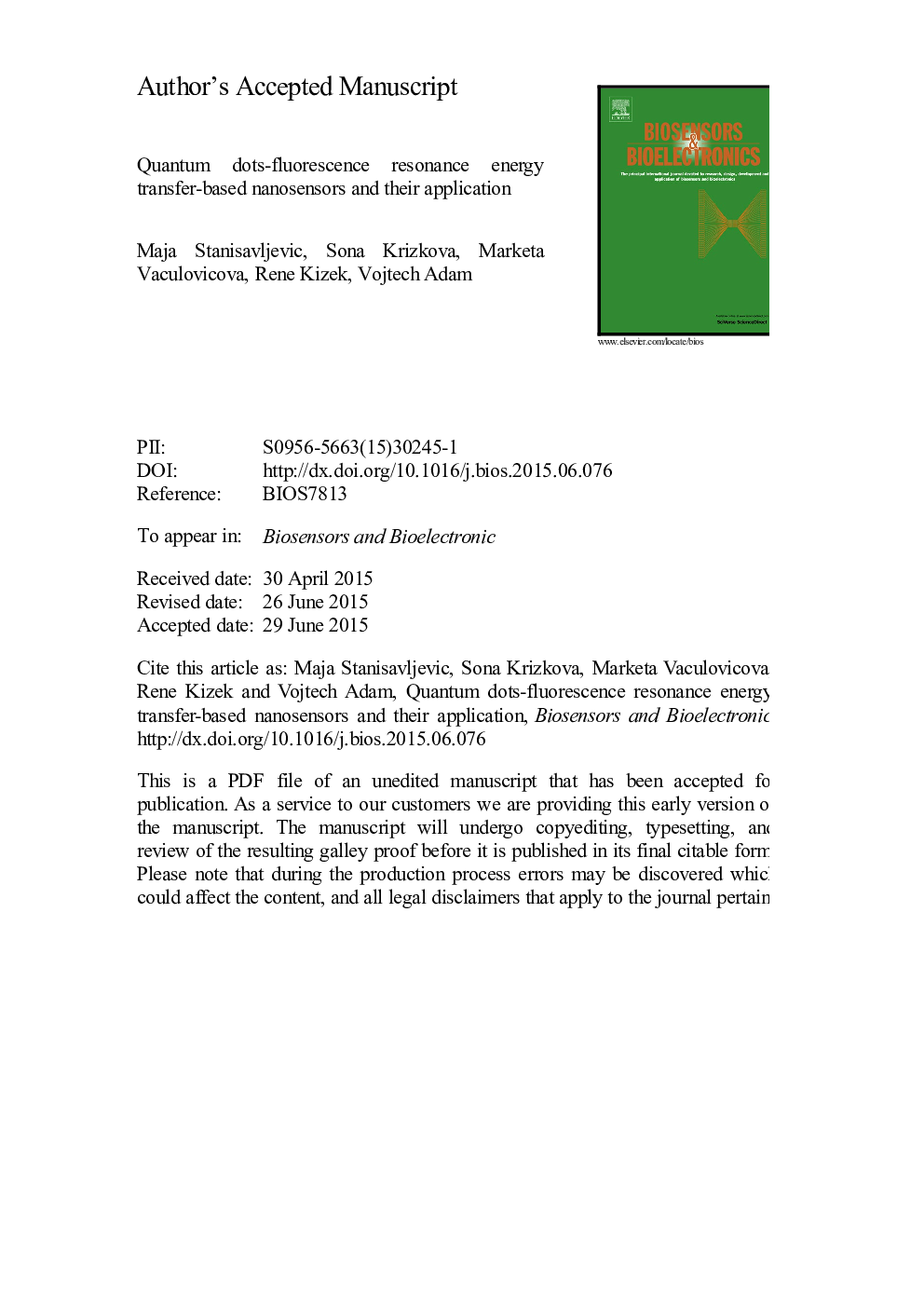| Article ID | Journal | Published Year | Pages | File Type |
|---|---|---|---|---|
| 7231452 | Biosensors and Bioelectronics | 2015 | 55 Pages |
Abstract
Fluorescence resonance energy transfer (FRET) in combination with quantum dots (QDs) and their superior properties has enabled designing of the new and improved sensors. In this review, the latest novelties in development and application of FRET nanosensors employing QDs are presented. QDs offer several advantages over organic dyes - broad excitation spectra, narrow defined tunable emission peak, longer fluorescence lifetime, resistance to photobleaching and 10-100 times higher molar extinction coefficient. These properties of QDs allow multicolor QDs to be excited from one source by common fluorescent dyes without emission signal overlap and results in brighter probes comparing to conventional fluorophores. Due to these benefits, QD-FRET-based nanosensors gained a wide spread popularity in a variety of scientific areas. These sensors are most frequently applied in the domain of the nucleic acid and enzyme activity detection. Other applications are detection of peptides and low-molecular compounds, environmental pollutants, viruses, microorganisms and their toxins, QD-FRET-based immunoassays, and pH sensors.
Related Topics
Physical Sciences and Engineering
Chemistry
Analytical Chemistry
Authors
Maja Stanisavljevic, Sona Krizkova, Marketa Vaculovicova, Rene Kizek, Vojtech Adam,
